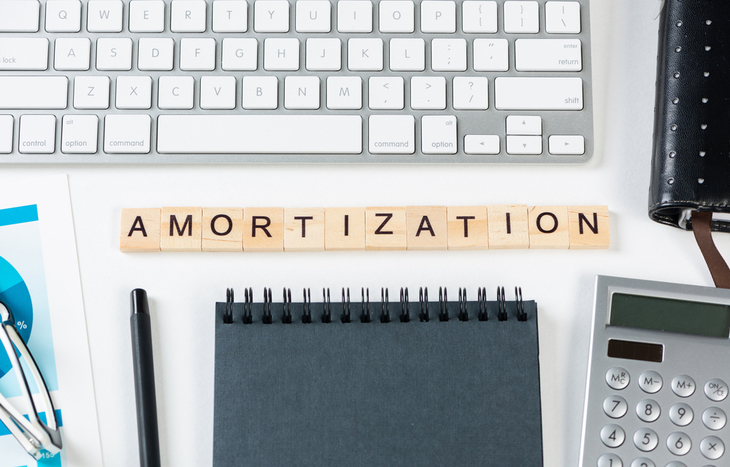What is Bond Amortization?
When companies issue a bond, they do so with a par value and a coupon rate: the terms that dictate the yield of the bond for potential investors. However, once they reach the market, bonds can trade at a premium or a discount, depending on those terms. As they do, companies need to consider how they’ll approach bond amortization: the process of realizing the full payback of the bond on their books.
There are a couple of ways to approach bond amortization, including straight line and effective interest methods. Both are recognized under Generally Accepted Accounting Principles (GAAP). How a business chooses to account for bond amortization depends on the nature of the bond, the company’s financial strategy and the amounts in question.
Here’s a closer look at bond amortization: how it works, methods for amortization and how this process impacts a company’s financial accounting.

What is Amortization?
The concept of amortization involves two parts: interest and principal. Payments against the bond shift more from interest to principal over time. This is because the payment amount remains static while the principal slowly decreases.
Amortization is a concept that you can better understand through example. Most people are familiar with amortization if they have a fixed-rate mortgage. In fact, every new homeowner receives an amortization table of their mortgage after closing on their home.
Mortgage Payment Example
Bailey purchases a home for $132,000, at an interest rate of 3.375%. Her monthly mortgage payment is $588. For her first mortgage payment, $214 goes to principal and $374 goes to interest. For her 60th payment, $252 will go to principal while $336 will go to interest. And for her 180th payment, $353 will go to principal while $235 goes to interest. This shift will continue on, shifting further toward principal until she pays off the loan.
The Benefits of Amortizing Bonds
Companies can amortize bonds as a way to reduce the risk of default. Because the principal of the loan is repaid over time, it’s less of a strain on the company than making a balloon payment. In addition, amortization reduces the duration of the bond, which helps companies better control the interest expense. Moreover, that shorter bond period safeguards against interest rate risk. In many ways, bond amortization is beneficial to investors and the companies issuing the bond.
Straight Line Bond Amortization
As is the case for something like depreciation, straight line bond amortization involves the same amount of interest expense each year over the life of the bond. This ensures a consistent payoff amount across the life of the bond, without any balloon payment or lump sum payoff at the end. It can apply to both discounted bonds and those selling at a premium.
Discounted Bond Example
There is a $10,000 bond that’s currently valued at $9,500. It’s a four-year bond with a 10% coupon rate. Each year, the cash payout for that bond will be $1,000 (10%). However, it will also carry an additional expense for the bond discount—in this case, $175 per year. Therefore, the interest expense for this bond will be $1,175 per year.
Premium Bond Example
There is a $10,000 bond that’s currently valued at $10,500. It’s a four-year bond with a 10% coupon rate. Each year, the cash payout for that bond will be $1,000 (10%). However, because it sells at a premium, that amount is subtracted from the cash payout. In this case, the interest expense for the bond will be $9,825 per year.
Straight line amortization is a quick and convenient way of amortizing a bond, but it’s not always the most accurate or financially beneficial way for companies to approach bond amortization. Many companies choose an accelerated amortization schedule, instead.
Effective Interest Amortization
Another way to amortize a bond is through effective interest amortization. This method is more complex than straight line bond amortization, but also provides a more accurate representation because it considers present value.
To calculate effective interest amortization, investors need to find the present value of the total cash payouts of the bond, as well as its face value, using the current market interest rates. Adding these values together gives the total present value of the bond. If that number is lower than the par value of the bond, it’s discounted; but if the figure is higher, the bond is selling for a premium.
If the bond sells at a discount, the business would amortize the discount amount over the life of the bond at the effective market rate. And if it sells at a premium, the business would subtract the premium amount over the life of the bond at the effective market rate. In both cases, the closer to the maturity date, the closer the interest expense gets to the par value of the bond.
Accounting for Bond Amortization
Companies issue corporate bonds to fund projects and expansions. They choose bonds because they offer a predictable way of accounting for funds: from both credit and debit standpoints. The business knows exactly how much money is coming in and how much it needs to pay back over a predetermined period of time.
And bond investing is a great way to build up your portfolio as you prepare for retirement. To learn more, sign up for the Wealthy Retirement e-letter below!
The mode of bond amortization the business chooses depends on many factors. For example, this includes whether it trades at a premium or a discount, as well as the maturity date of the bond. In either case, properly amortizing the bond ensures companies account correctly for these liabilities.





